click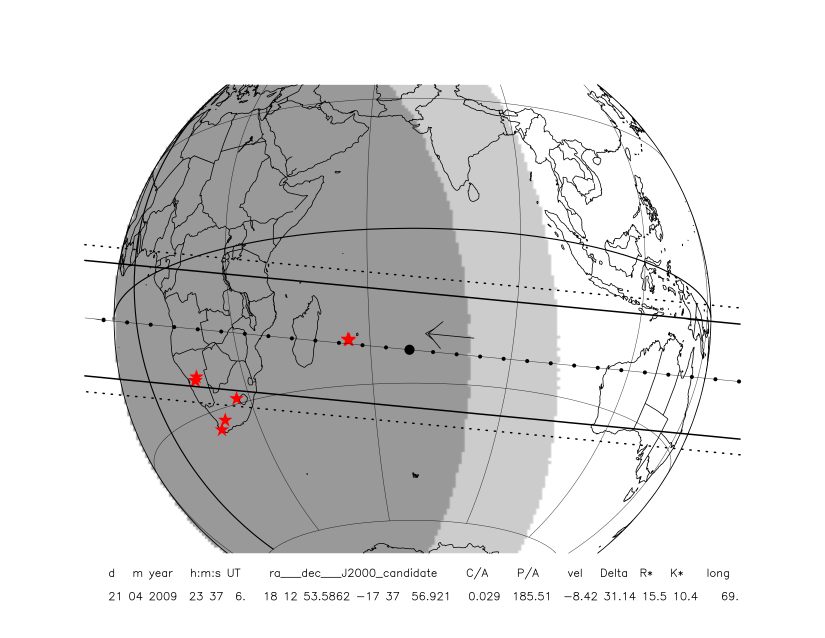 |
click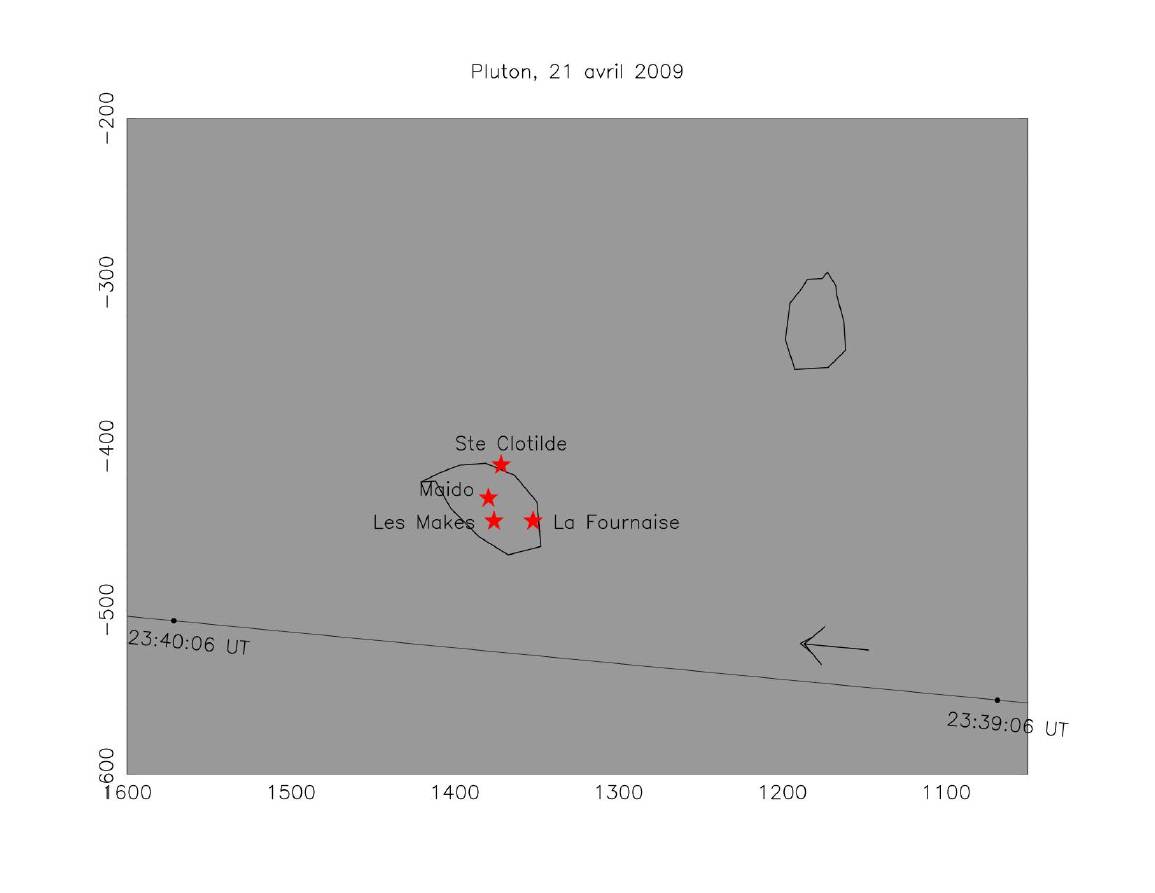 |
The Pluto stellar occultation of 21/22 April 2009
On 21April 2009 near ~ 23:35 - 23:45 UT (i.e. the MORNING of 22 April 2009 in Africa and Indian Ocean), Pluto will occult a star.
Star coordinates (J2000):
ra= 18h 12m 53.5862 sec
de= -17d 37' 56.921"
(measurement from Rio de Janeiro group, Assafin et al., July 2008)
click |
click |
The shadow on maps moves from right to left.
Dots on centerlines are plotted every mn. The larger dot is
for geocentric closest approache, namely 23:37:06 UT (NB. April 21 UT, i.e. **morning** of April 22 in Africa and Indian Ocean).
Solid lines is where the star reaches its half-light level, due to differential refraction by Pluto's atmosphere.
Dotted lines are where the stellar drop is only 1% drop, and mark the limits where the occultation can practically be detected.
Red star symbols are potential observing sites.
NB. error in **timing** can be up to 3-5 mn. Error in shadow path can be up to 700 km in N-S direction
NB'. the event is pretty slow, ~8.5-9.0 km/sec, so that a central event may last for up to 6 mn.
click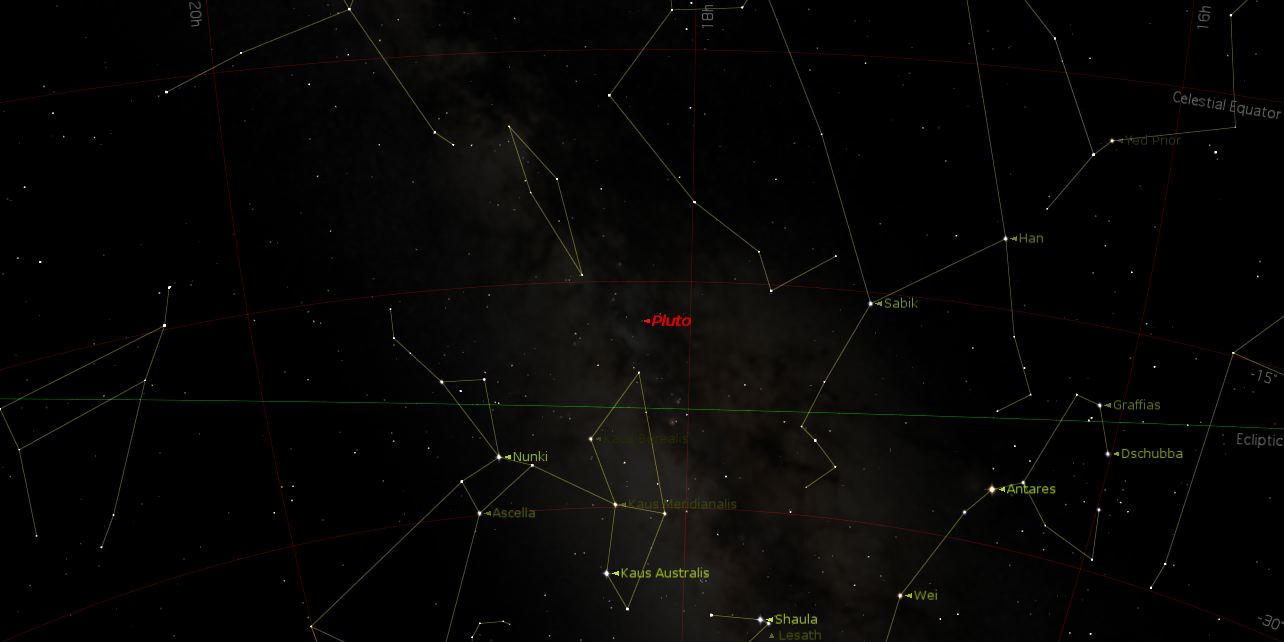 |
click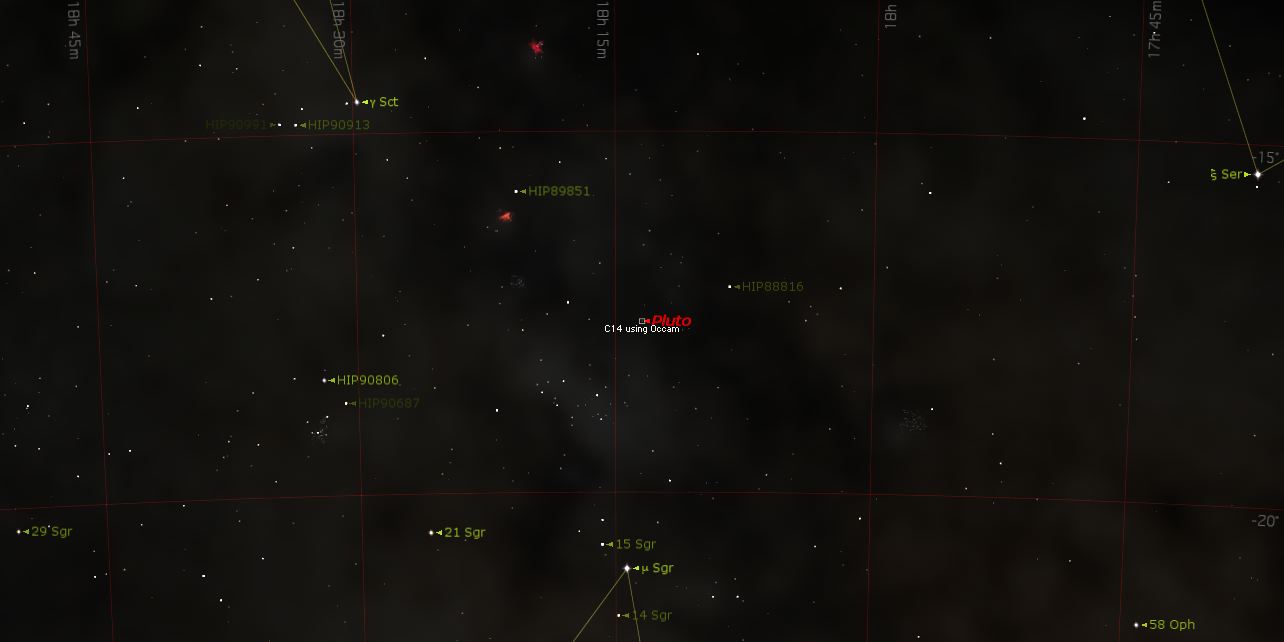 |
click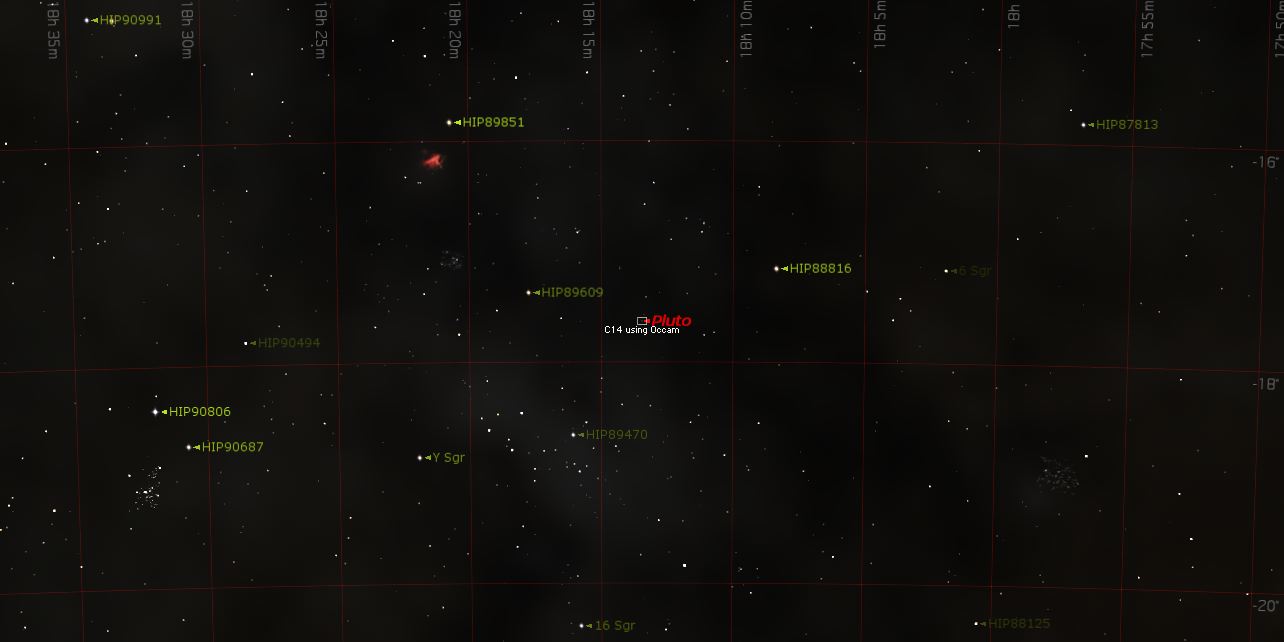 |
click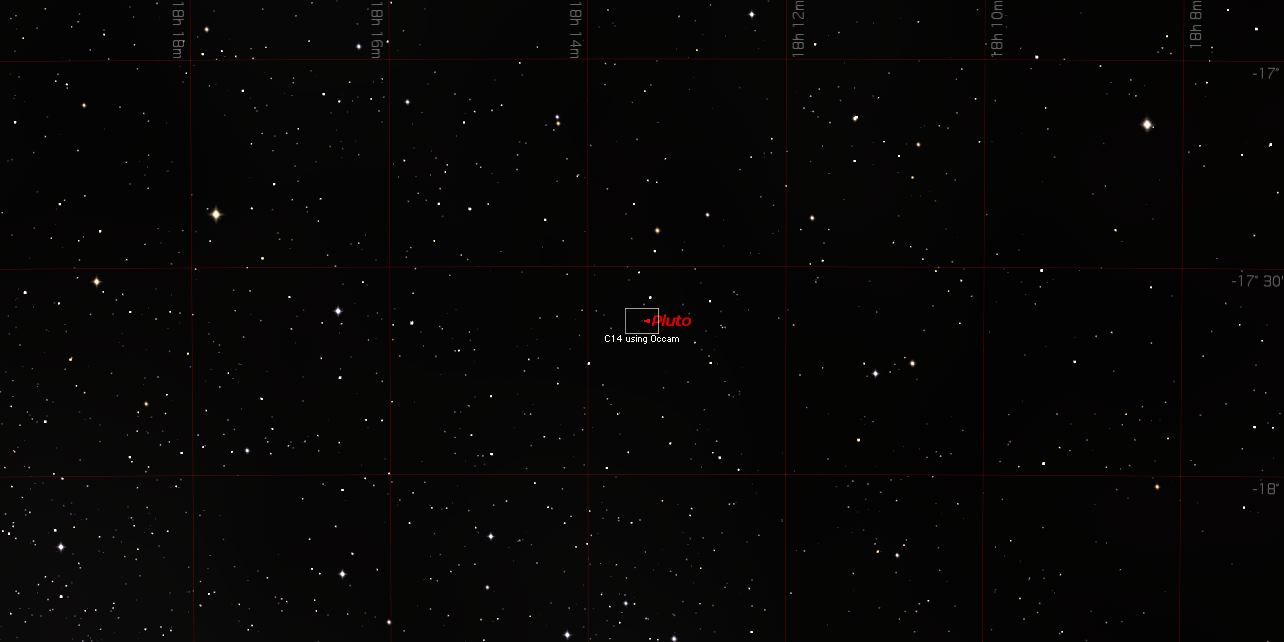 |
click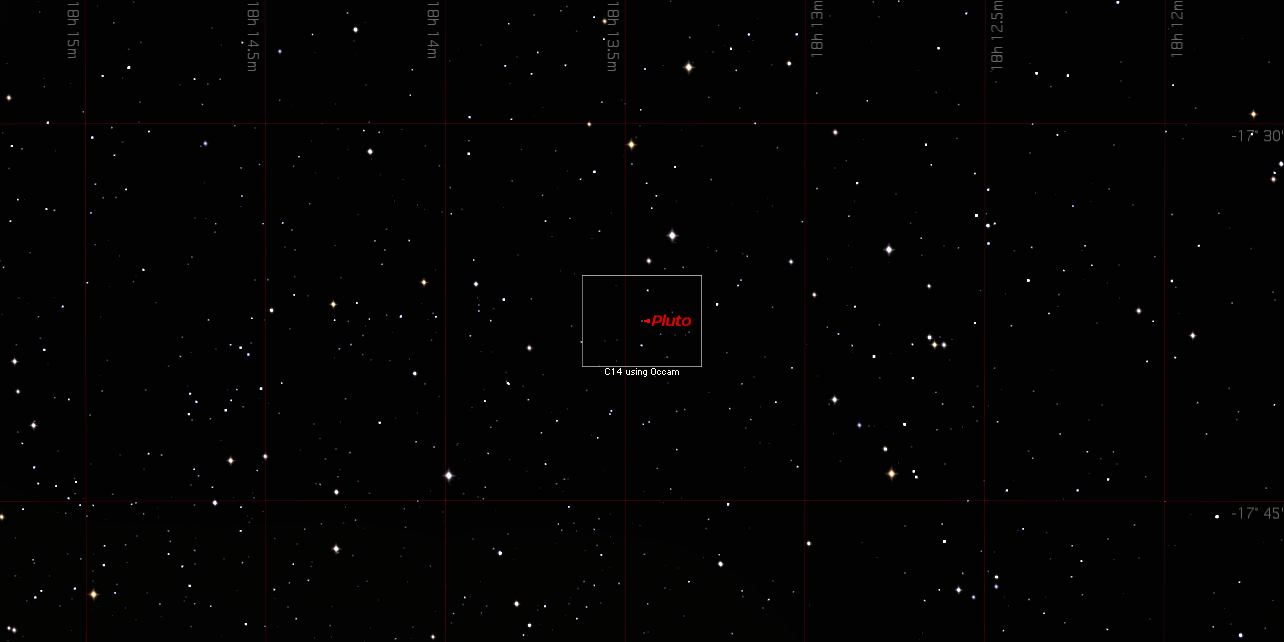 |
click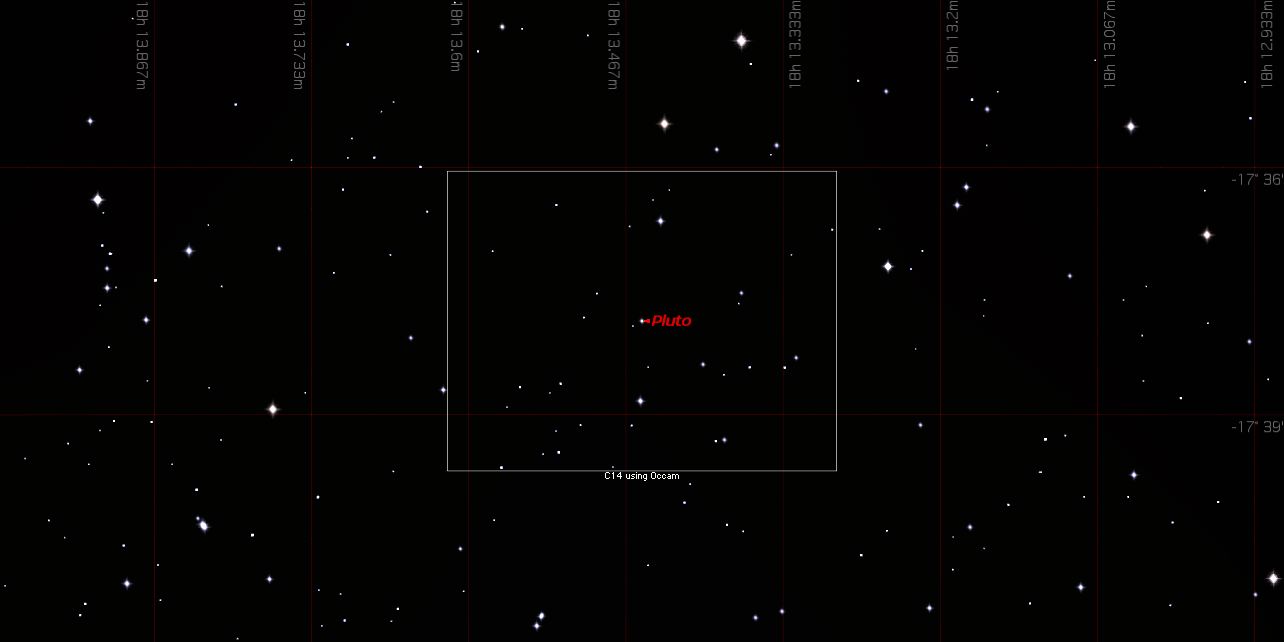 |
click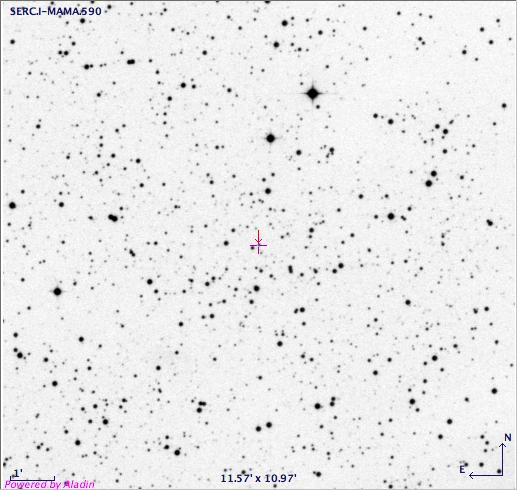 |
click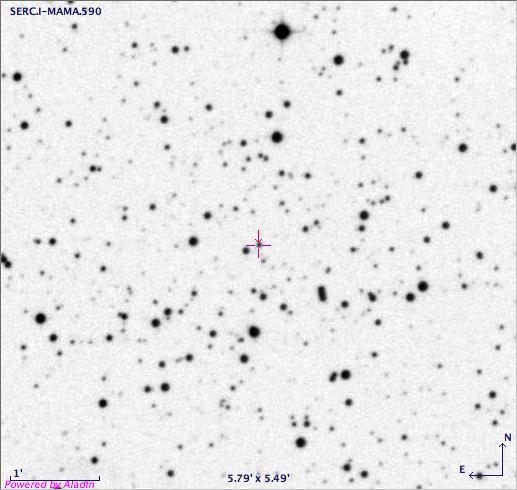 |
click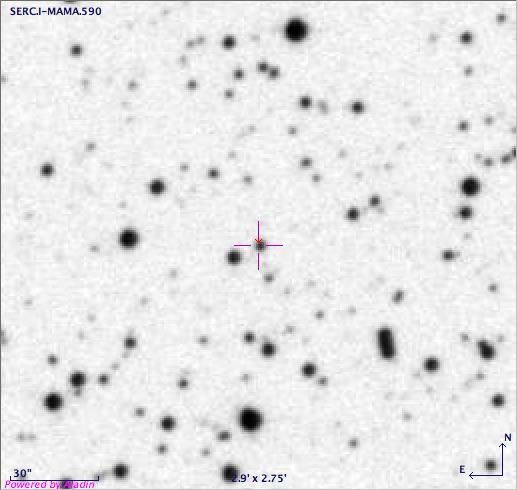 |
- the event is slow (about 8.5-9.0 km/sec), so the occultation can last for up to 6 mn, if central. Even data taken at cycle
times of 1 to 5 sec or more can be useful.
Try to minimize the dead time between frames, compared to the exposure time of each frame.
For instance, there is not much advantage having an exposure time of 0.5 sec if the read/write time of the image is
6 sec, as most of the photons will be lost. It is better than to have an exposure time of 6 sec, to get at least 50% of
the photons.
- be very careful in getting a GOOD ABSOLUTE TIMING of each of your image. This is of great importance when reconstructing
the geometry of the event using various stations.
- if the occultation is central, an increase of light (the so-called "CENTRAL FLASH") may be visible at mid-occultation for several seconds.
Such flash is most useful to constrain the amount of dust possibly present in the deepest Pluto atmospheric layers.
If observed from various sites, it is also very useful to measure the speed of winds in Pluto's lower atmosphere.
- the star is VERY RED. The contrast of occultation will be POOR in visible. Even in R, the star is 9.4 times fainter
than Pluto see table below. I band is more favourable, as the star is 2.2 fainter than Pluto, corresponding to a
maximum drop of the combined star+Pluto flux of a little bit more than 31% during the event, see again table below..
TESTS SHOULD BE PERFORMED BEFOREHAND to optimize SNR according to your
instrument and receptor.
Remember that filters can help increase the contrast, but they reduce the photon flux.
So, compromises should be attained, that WILL DEPEND ON TELESCOPE SIZE.
- IT IS EXTREMELY IMPORTANT, for further analysis, to be able to take away Pluto's flux from the
light curve, which will consist in the SUM of the star and Pluto fluxes.
For instance, if the occultation is grazing, then the star will not disappear entirely behind Pluto.
Thus, the real depth of occultation can be determined only if Pluto's contribution is properly subtracted
to the flux. The real depth of occultation is then important to constrain both Pluto's atmospheric pressure
and the reconstruction of the occultation geometry.
This means carefully calibrating Pluto's flux vs. the stellar flux before or after the event,
when they are well separated. The problem is that the star being VERY RED, and Pluto more neutral,
the ratio star/Pluto WILL CHANGE WITH AIRMASS. So, such calibration may result useless.
Also, measuring Pluton on a different night for comparison is not advised, as the
planet brightness varies by up to +/- 15% during its 6.4 rotational period.
- A solution is then to take another star in the FoV (or **better**, several other stars) as reference(s),
and measure their relative fluxes, together with the occulted star, on other night(s) AT THE SAME AIRMASS as for the occultation,
with the SAME FILTER, DETECTOR, TELESCOPE, etc..., thus allowing us to retrieve Pluto's contribution to the
occultation light curve.
Note also that using MORE THAN ONE reference star has the advantage to be able to measure those reference stars
with respect to each other, thus giving the opportunity to check the overall consistency of the calibration. For instance, if
the ratio of two (or more) reference stars is not the same during the occultation and during the calibraton night(s), then it means
that conditions varied and chromatic effects are not the same anymore, or that the stars are variables, etc...
Be careful also that some detectors (e.g. video, or Watec cameras when the "gamma" is no set to unity) are NOT LINEAR, so that
calibration is meaningless in those case, unless non-linearity is accounted for. Again, do not forget to set "GAMMA=1" (or "NO GAMMA")
on some cameras.
- Note that the calibration NEEDS NOT BE DONE WITH THE SAME INTEGRATION TIME as for the occultation. Taking longer integration time will improve
the SNR of the calibration and reduce the amount of data. This assumes, however, that the receptor is linear, i.e. that a longer integration
time will respect the various flux ratios measured in the FOV.
- Finally, do not forget to take DARKS and FLATS.
The star is very red, with V~16.7, I~14.6 and K~11.3
(see Vizier service)
Note that Pluto has V~14.4 and I~13.5
| R | I | |
| Pluto/Star ratio | 9.4 +/- 0.2 | 2.2 +/- 0.07 |
| Maximum depth of occultation | 10% | 31% |
For contacts, more information and/or comments, you can contact me email at:
bruno.sicardy@obspm.fr